Sectarian violence aimed at religious minorities and social groups professing a version of Islam that is at variance with the fundamentalist and puritanical Wahabi philosophy continues to remain a hallmark of the social and spiritual landscape of contemporary Pakistan which is often referred to as a “failed state.” The unchecked and continuing targeting of the adherents of Shia Islam by radical religious outfits has added a new, disturbing dimension to the rapidly deteriorating human rights record of Pakistan. In recent years, the Persian speaking Hazara community, conspicuous for its distinct Central Asian features and professing Shia Islam, has become the favourite target of surprise attacks and vicious violence engineered by the an assortment of extremist groups including Lashkar-e-Jhangvi,(LeJ), which under the mesmeric influence of the Deobandi school of thought, is bent upon promoting Sunni Islam as the mainstay of Pakistan’s socio-religious life.
The Mongolian features and light skin of Hazaras, who are believed to be the descendants of Mongolian soldiers and slave women who settled in Central Afghanistan in 12th century, sets them apart from the rest of the Pakistani population and thus makes them an easy target of attack. As it is, Hazaras were forced to migrate to Pakistan from their original homeland in Afghanistan on account of a variety of factors including the persecution of the community by the ruling elite, famines and food shortage as well as despise and discrimination to which it has traditionally been subjected to by the conservative Afghan society. Historical records show that Hazaras have been migrating to Pakistan since the 19th century. Lacking in political clout and being numerically small, the Hazara community in Afghanistan used to face a serious threat to its survival as a distinct social group with its own ethnic and cultural moorings. Clearly and apparently, its sociological and ethnic characteristics along with its adherence to Shia school of Islam, has made the Persian speaking Hazara community a suspect in the eyes of the mainstream Afghan society which is preponderantly Sunni.
In his excellently documented tome, ‘War and Migration’, social anthropologist and author Alessandro Monsutti refers to the migration of Afghan Hazaras to the area that constitutes the present day Balochistan province of Pakistan. Following the Second Anglo Afghan War (1878-1880), the first wave of Hazaras came to Quetta, which is now the provincial capital of Balochsitan, the largest state in Pakistan that shares borders with Iran and Afghanistan, to seek employment in British owned enterprises. At that time, there are said to have been a few hundred Hazaras in Balochistan. The subjugation of Hazarajat province by the Afghan Emir Abdul Rahman Khan between 1891 and 1893 also triggered a mass exodus of the community to Balochistan.
Further, following the 1971 drought that hit Hazarajat region in Afghanistan, several thousand Hazaras moved into Balochistan to settle in Quetta. And between 1973 and 1978, conflict between Pakistan and Afghanistan was another factor that propelled Hazara migration to Balochistan, since the then Afghan President Daud Khan saw Hazaras as “the fifth column of Pakistan in Afghanistan.”
Following the April 1978 Communist coup in this landlocked, poverty ridden mountainous country, along with the Soviet intervention in 1979, the migratory movement of Hazaras to Balochistan gathered momentum. What is more, many Hazaras arrived as refugees in Balochistan in 1996 when the Taliban warlords, a majority of whom were Sunni Pasthuns, started persecuting the community for its religious beliefs.
In Quetta, known for its poor law and order situation, Hazaras reside in exclusive residential colonies around Hazara Town that came up over the last one century .Many of them have excelled as successful businessmen and entrepreneurs and the literacy attainment of Hazaras in Balochistan is much higher in comparison to the national literacy level of Pakistan. The total population of Hazaras in Pakistan has been estimated to be less than a million.
Sunni extremist groups, which consider Hazaras as being proxies of Iran in Pakistan, have launched a hate campaign against this community . The two deadly and devastating bomb blasts triggered off at Quetta earlier this year had left close to 200 Shias—a majority of them Hazaras—dead. This has turned Hazaras shell shocked with serious concern for their future in Pakistan. And in 2012, an estimated 100 Hazaras had to pay with their lives in various attacks engineered by religious extremist outfits across Pakistan.
Against this backdrop, there is a sound reason to believe that reports in a section of the Pakistani press suggesting apprehension among Hazaras over the growing linkage between the militants of LeJ and Baloch resurgent groups waging an armed struggle for an independent Baloch homeland, could just be a ploy to give a bad name to the Baloch separatist movement. For Baloch nationalists who are secular to the core have no love lost for fundamentalist outfits that are hand in glove with Pakistani army, the most hated institution in Balochistan. In fact, Baloch separatists have been blaming Pakistan army and the notorious spy agency Inter Service Intelligence (ISI) for the large scale abduction and killings of Baloch youths.
On its part, ISI, is quite pleased with the LeJ’s anti Hazara campaign. For this strategy suits ISI’s long term objective of turning Balochistan into a haven of fundamentalist and radical school of Islam. Baloch nationalist political parties are clear in their perception that the country’s ruling elite and military establishment are adding to the on-going turmoil and turbulence in the this mineral rich province by encouraging the growth of extremist outfits. In this context, Mohammed Waseem, a Professor of Political Science at the Lahore University of Management Sciences, has expressed the view that because LeJ may be aiding military’s undeclared operations against Baloch insurgents, the civilian government is in two minds in so far as acting against LeJ is concerned. Human rights bodies too have indicted the state establishment for its alleged involvement in providing full impunity to religious militants responsible for the killing of Hazaras and Baloch nationalists in Balochistan.
Indeed, Pakistan army’s change in its operational strategy towards Balochistan –from overt operations to more covert ones-- is becoming evident to the discerning observers. As more and more Baloch nationalist activists began to disappear, more and more religious seminaries began surfacing across Balochistan with the sole objective of converting the otherwise secular Baloch society into a religious extremist one. Media reports point out that religious seminaries (Madrasas) propagating extremist form of Islam are mushrooming rapidly in Balochistan with funds from West Asian Muslim countries.
Till recently, sectarian outfits like Ahl-e-Sunnatwal Jammat propounding extremist Islamic philosophy has had no influence on the social landscape of Balochistan suffused with the spirit of secularism. However, following the collapse of Taliban dominance in neighbouring Afghanistan, a large number of Taliban fighters took refuge in and around Quetta. These Taliban militants have now aligned with LeJ cadres who are known to have close links with ISI. That the Taliban-LeJ alliance has been given a free hand to operate in Balochistan is evident from one of their threat letters distributed in Hazara localities in Quetta in 2012. The letter said, “Just as our fighters have waged a successful jihad against the Shia Hazaras in Afghanistan, our mission in Pakistan is the abolition of this impure sect and people”. Investigation into the dynamics of the terror campaign against Hazaras reveal that violence and killings of Hazaras was spearheaded by the Balochistan chapter of LeJ led by Usman Saifullah Kurd who had escaped from a high security prison in Quetta way back in 2008.
Indeed, Quetta’s Hazara community has been pitchforked into the frontline of Pakistan’s no holds barred war against religious fundamentalism. Because of their adherence to Shia school of philosophy, Hazaras are considered heretics by the extremist LeJ. And for the community, its very survival as a unique ethnic group in the socially turbulent Pakistan has become a big question mark. Against this backdrop, Hazaras have made strong demands for handing over the administration of the sprawling and violence ridden Balochistan to the military and a blanket ban on all the extremist outfits responsible for sectarian violence. But then the Hazara demand for military intervention in the administration of Balochsitan appears rather strange and contradictory as the Pakistani army is hand in glove with the notorious ISI which has been supporting the radical Islamic groups that have been in the forefront of violent campaign against Shias including Hazaras. As things stand now, Hazaras seems to have become desperate enough to espouse the need for handing over the administration of Balochistan province to Pakistani army.
Not surprisingly then Pakistan’s Human Rights Commission has come down heavily on the powers that be for its failure to crack down on religious fundamentalist groups including LeJ that are behind the deadly anti Hazara campaign. “What steps, if any, had been taken after the deadly attack against Quetta’s Hazaras in order to bring to justice the ruthless killers who have the audacity to claim responsibility again and again for their ghastly actions,” asked the Human Rights panel.
Nawab Muhammad Aslam Khan Raisani, belonging to the influential Raisani tribe, who took over as the Chief Minister of Balochistan in 2008 and was dismissed in 2013 for his failure to maintain law and order in the province as highlighted by the audacious killings of Hazaras, has been blamed for the complicity in the carnage of Hazaras. In a move that stirred controversy, Raisani had in 2011 stated that the killing of 40 Shia Hazaras in his stronghold town of Mastung was not a big deal. To add insult to the injury of the community, Raisani said that he would arrange to send truck loads of tissue paper to the families of Mastung incident in which Hazaras were forced off the bus and executed by Al-Qaeda militants.
According to the Movement for Solidarity and Peace in Pakistan, the Government of Raisani was a complete failure with regard to providing protection to the Hazara community. Hazara activist on their part point out that Raisani was a helpless spectator who could neither stop the killings of Hazaras nor wanted to sacrifice his Government in an effort to protect them.
A report on the deteriorating law and order situation in Balochistan under Raisani which was released by Pakistan’s Human Rights Commission in August 2012 points out that ”Administration seems to bear ethnic and sectarian biases against the Hazara Shia community. Since the Government led by Raisani assumed the charge, not a single charge sheet has been presented in the courts against the accused. The accused are arrested in the morning and released in the afternoon. No government or public official had either condemned the targeted killing of the members of the Hazara community or come to condole the murders and offer any compensation to the families of the victims”.
According to the London based Hazara United Forum, nearly 1000 Hazaras have been killed and more than 2000 injured and maimed in 120 recorded terrorist attacks on the community over the past decade. ”Our graveyards are full. What is our crime? We are the most non violent and peaceful citizens of our country and love it as much as anyone else. How can killing us serve any geo-political objectives of any group?” asks a spokesman of Hazara United Forum.
A section of Hazaras, unable to withstand the systematic campaign of violence and persecution targeted at them, are leaving Pakistan with a view to seek asylum in Australia. As pointed out by Abdul Khaliq Hazara, Chairman of the Hazara Democratic Party (HDP), many youngsters of the community have left the country in search of a congenial environment and a better life. Though it is estimated that about one lakh Hazaras have already left Pakistan, data to substantiate this figure is not forthcoming. However, the escape route of Hazaras from Pakistan to Australia is strewn with hazards and dangers. To begin with, Hazaras willing to bid adieu to Pakistan leave for a South East Asian destination from where they move to Australia in boats. Many of the Hazaras have lost their lives while negotiating rough seas on the rickety boats. Indeed, Hazaras seems to have become a part of the saga of boat people. Interestingly, boat people is the term that came into vogue in mid-1970s when Vietnamese refugees fled Communist controlled Vietnam on boats on asylum seeking spree. But then, as observed by an elderly Hazara, leaving Pakistan is not an easy option. Going further, he states that even shifting bases within the country would not help the community since it is easily recognized.
Though banned a decade back under US pressure, LeJ continues to be alive and kicking, operating as it does under the very nose of the security forces with a certain degree of brazenness. Hazaras are clear that a well conceived social campaign against religious extremism accompanied by a rigorous military operations against fundamentalist groups could alone go a long way towards ensuring their safety in Pakistan. But then the political elite in Islamabad and men in uniform in Rawalpindi have very little reason to step in to protect the politically weak Hazara community.
Political analysts are of view that the ruling dispensation in Islamabad seems to have a soft corner for LeJ. For the widely held perception is that on account of the historical linkage between the Pakistan defence forces and LeJ, the civilian government in Islamabad seems unwilling to crack down on this extremist outfit, which is in the forefront of the violent campaign against Hazaras. Significantly, the website hazara.net describes the on-going persecution of the community in Pakistan as an attempt at “genocide” and “ethnic cleansing”. This websites also highlights the fact that the terrorist outfits drawing inspiration from the philosophy of Al Qaida and supported by Saudi petro dollars are increasingly targeting Hazaras . Along with Hazaras, the on-going spell of sectarian violence in Pakistan is also targeting Ahmadiyas with a high degree of viciousness. In the eyes of hard-line radical Islamic outfits, both Ahmadiyas and Shias are “heretics” and as such are not qualified to be the “true soldiers of Islam.” Intolerance and hatred for milder and accommodative forms of Islam seems to have become the staple food of Pakistan based militant groups in sync with Taliban, a veritable psychological progeny of the short-sighted American foreign policy.
In the ultimate analysis, the victimization and persecution of Hazaras in Pakistan points out to a deep rooted social malaise that draws heavily from the radical religious teachings assiduously propagated by the fundamentalist Islamic outfits owing allegiance to the Wahabi school. The ruling royal family of Saudi Arabia is known to be a major source of funding for the propagation of the rigid Wahabi teachings in Pakistan .
On another front, the on-going sectarian violence in Pakistan also implies the rapidly waning influence of “tolerant and humanistic” values and “ accommodative spirit” over a growing section of the population in Pakistan. Clearly and apparently, there is a pronounced need to bring about a greater degree of cohesion in the “disintegrating” social fabric of Pakistan through the message of love and brotherhood, But then the rapid resurgence of hardliner Taliban philosophy in recent years has contributed to the erosion of the influence of human values and syncretic tradition in a section of Pakistani population. As sociologists point out, strengthening the roots of syncretic tradition and moderate social values in Pakistan could go a long way towards healing the festering wounds of sectarian violence eating into the vitals of that country. Right at the moment, Pakistan seems to be torn between growing political appeal of radical Taliban philosophy and human values inherent in its syncretic tradition. And this confusing social milieu seems to have made life miserable for minority social groups like Hazaras aptly described as the” abandoned community”.
Published Date: 1st June 2013, Image Source: http://resources3.news.com


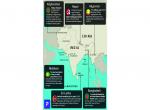
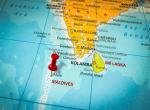


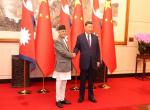
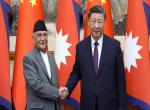
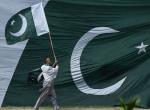
Post new comment